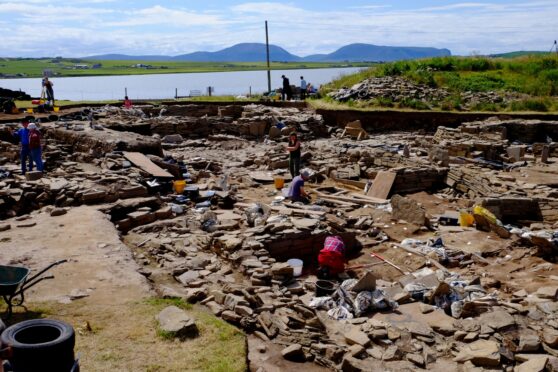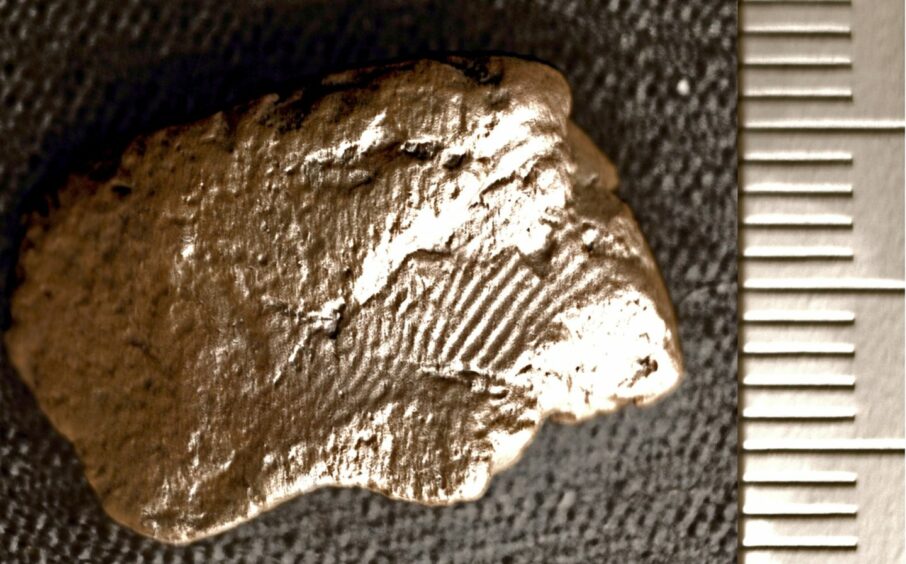Researchers uncovering the ancient secrets from the prehistoric site at Ness of Brodgar have analysed new evidence that shows the pottery as a craft was passed down from mentor to young student.
Fingerprints from almost 5,000 years ago have been uncovered at the neolithic site on the Orkney Islands.
These were confirmed to belong to adolescent and adult males who partook in the craft of pottery-making during the period.
However, two new fingerprint samples collected from a pottery sherd give researchers proof that pottery-making was a skill passed down from experienced craftsmen to young potters of the time.
The discovery was made during the ongoing University of the Highlands and Islands Archaeology Institute excavation in Orkney’s West Mainland.
The total number of prints discovered at the site is now eight, with some differing in age and sex according to the prints distinct features.
Broader spacing between the ridges of a print indicates that a person is older and also if they are male as opposed to female.
The prints have been analysed by Professor Kent Fowler, the director of the University of Manitoba’s Ceramic Technology Laboratory in Winnipeg, Canada.
‘We could be seeing the emergence of a pattern developing for the production of pottery in the Neolithic’
Professor Fowler said: “Both came out as males, but the ages are younger than we saw in the previous two sherds.
“Print A centres around 14-years-old and Print C around 13-years. So, I’m reasonably confident that we are looking at post-pubescent males here but younger than the three identified previously.”
Although it is not possible to say for sure that the two prints belong to the same person, Professor Fowler thinks this could be the case.
“Statistically, the age values of the two are very close – we are talking months not years – and from the variation in the forensic literature you could expect as much from measurements of different fingers of the same person,” he explained.
“In this case, it is quite likely the prints belong the same individual given they are so close together and on the same surface of the sherd.”
“At 13 or 14 years of age, the young potters would certainly be strong enough to hand build the pottery and they would have had the motor skills to do it, although they might not admirably compress the clay.”
Nick Card, the director of the excavations, added: “This is yet another exciting discovery at the Ness, and although it is early days we could be seeing the emergence of a pattern developing for the production of pottery in the Neolithic, which would have implications for the division of labour and tasks.”
Excavation of the site at Ness of Brodgar has been ongoing since 2003 and has uncovered many artefacts and structures that date back to 3300BC-2400BC.
The team has also uncovered the most extensive collection of late Neolithic grooved ware pottery in the UK.

